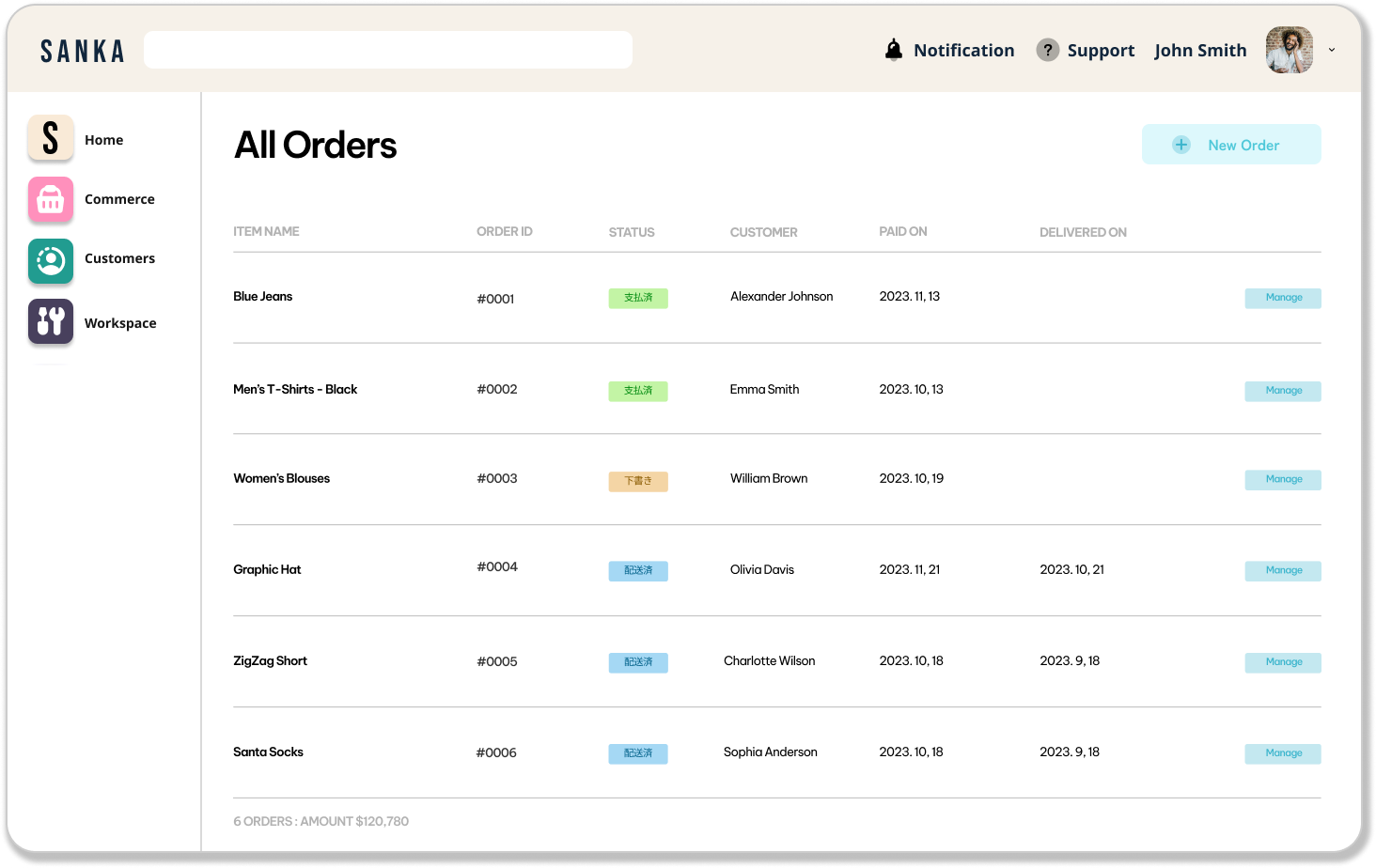Introduction
In 2024, dropshipping has emerged as a game-changer, offering entrepreneurs a low-risk entry into the online retail space.
Whether you're a seasoned business owner or a newcomer to the scene, understanding the fundamentals of dropshipping is essential for success. In this comprehensive guide, we'll delve into the basics of dropshipping, its advantages, and how you can start your own venture with minimal investment.
What is Dropshipping?
Dropshipping is a business model where the seller doesn't keep the products in stock.
Instead, when a customer places an order, the seller purchases the item from a third party and has it shipped directly to the customer.
This means you, as the drop shipper, don't have to handle inventory or worry about shipping logistics.
In turn, this means dropshipping is a low-risk business model that allows you to sell products to your customers without incurring huge running costs like a wholesaler would have.
Advantages of Dropshipping:
- Low Initial Investment: Unlike traditional retail models, dropshipping requires minimal upfront investment. You don't need to purchase inventory or manage a warehouse, significantly reducing your overhead costs.
- Flexibility and Convenience: With dropshipping, you can run your business from anywhere with an internet connection. There's no need to worry about packaging and shipping orders, allowing you to focus on marketing and growing your store.
- Wide Product Selection: Since you're not limited by physical inventory, you can offer a wide range of products to your customers without having to invest in each item upfront.
- Scalability: Dropshipping allows you to scale your business quickly and efficiently. As your sales grow, you can easily add new products and expand into new markets without the constraints of traditional retail.
Getting Started with Dropshipping:
1. Choose a Niche
Start by selecting a niche market or product category that interests you. Consider your passions, expertise, and target audience when making this decision.
But, it should be specific enough to attract a targeted audience but broad enough to allow for a range of products.
For example, instead of selling general pet products, you might focus on eco-friendly pet toys, an area with growing interest and potential customer loyalty.
2. Conduct Market Research
Understanding your potential market and competitors is next. Tools such as Google Trends can give you a sense of consumer interest in the products you're considering. Analyzing competitors can show you what's working and what gaps you might fill.
If you notice a competitor excelling with handcrafted wooden watches, consider how you might offer something similar but with a unique twist, like custom engravings.
3. Find a Reliable Supplier
Research and partner with reputable suppliers who offer quality products and reliable shipping services.
Platforms like AliExpress, Oberlo, and SaleHoo can connect you with a wide range of suppliers.
Reach out to several potential suppliers for your eco-friendly pet toys and discuss their production capabilities, shipping times, and minimum order requirements.
4. Build Your E-Commerce Store
Create an online store using an e-commerce platform like Shopify, WooCommerce, or BigCommerce.
They often integrate directly with dropshipping suppliers and tools, automating much of the process.
Customize your store to reflect your brand identity and optimize it for sales and conversions.
5. Market Your Store
Getting customers is where the real work begins. Implement a comprehensive marketing strategy to drive traffic to your store and attract potential customers.
Utilize social media, content marketing, email campaigns, and influencer partnerships to increase visibility and generate sales.
Develop a multi-channel marketing strategy, including SEO, content marketing, social media, and paid advertising.
6. Analyze and Optimize
Use analytics tools to track which marketing channels bring in the most traffic and sales, and which products are most popular.
Adapt your strategy based on this data to drive more traffic and optimize conversion rates.
If Instagram is generating more traffic than Facebook, reallocate your ad spend accordingly.
7. Manage Finances Wisely
Understanding the financial aspects, including managing cash flow, tracking expenses, and forecasting profits, will keep your business on solid ground.
Consider using accounting software like QuickBooks or another accounting software to keep track of all transactions, supplier payments, and customer sales.
8. Ensure Excellent Customer Service
Good customer service can set you apart in e-commerce. Focus on delivering exceptional customer service to build trust and loyalty with your customers.
Respond promptly to inquiries, address any issues or concerns, and strive to exceed expectations with every interaction.
For instance, you can develop an FAQ page addressing common concerns with eco-friendly materials and include a live chat option for immediate customer support.
9. Stay Legally Compliant
Understand and comply with legalities including business licenses, taxes, and e-commerce regulations to avoid any legal troubles.
Speak with a business adviser or lawyer to make sure you've filed all the appropriate paperwork and understand your tax obligations as a dropshipper.
10. Scale Your Business
Once you have a steady flow of sales and have streamlined your process, look for ways to scale.
This could be by adding new products, exploring new markets, or increasing your marketing efforts.
What products are you going to drop ship?
Finding and selecting profitable products for dropshipping is one of the most important steps in building a successful e-commerce business. Here are some strategies to help you identify products with high-profit potential:
- Market Research: Conduct thorough market research to identify trends, niche markets, and products in demand. Use tools like Google Trends, Amazon Best Sellers, and social media platforms to gauge consumer interest and preferences. Look for products with steady demand and limited competition to maximize your profit margins.
- Product Selection Criteria: Define specific criteria for selecting products for dropship. Consider factors such as product price, shipping costs, profit margins, and potential for upselling or cross-selling complementary products. Look for lightweight and non-perishable items to minimize shipping expenses and logistics complications.
- Supplier Verification: Partner with reliable and reputable suppliers who offer high-quality products and efficient shipping services. Research suppliers on platforms like Alibaba, AliExpress, and Oberlo, and read reviews from other drop shippers to assess their reliability and credibility. Establish clear communication channels with your suppliers to ensure smooth transactions and timely order fulfillment.
- Competitor Analysis: Analyze your competitors to identify gaps in the market and opportunities for differentiation. Assess their product offerings, pricing strategies, customer reviews, and marketing tactics to gain insights into what works and what doesn't. Look for underserved customer segments or niche markets that you can target with unique products or value propositions.
- Evaluate Profitability: Calculate the potential profitability of each product by considering factors such as product cost, shipping fees, advertising expenses, and profit margins. Use tools like Shopify's Profit Margin Calculator or Excel spreadsheets to estimate your net profit per sale and determine which products offer the best return on investment.
- Test Products: Before committing to a large inventory or marketing budget, test your selected products to gauge their performance and market demand. Consider running small-scale advertising campaigns or offering limited-time promotions to assess customer interest and conversion rates. Monitor key metrics such as click-through rates, conversion rates, and customer feedback to refine your product selection and marketing strategy.
- Stay Flexible and Adapt: E-commerce is a dynamic and ever-changing industry, so be prepared to adapt your product selection strategy based on market trends, consumer preferences, and competitive landscape. Continuously monitor market conditions, customer feedback, and sales data to identify emerging opportunities and adjust your product mix accordingly.
By following these strategies and guidelines, you can effectively find and select profitable products for dropshipping, setting the stage for a successful and sustainable e-commerce business.
Remember to prioritize quality, customer satisfaction, and value proposition in your product selection process to build trust and loyalty with your target audience.
Sanka: Your Partner in Dropshipping Success
Embarking on your dropshipping journey can be both exhilarating and daunting. However, you don't have to navigate this path alone.
Companies like Sanka offer comprehensive support and automation tools tailored to streamline your dropshipping operations.
From order processing and inventory management to customer support and analytics, Sanka equips you with the resources you need to thrive in the competitive e-commerce landscape.
In conclusion, dropshipping offers an accessible and lucrative opportunity for aspiring entrepreneurs to start and grow an online business.
By understanding the basics of dropshipping and implementing effective strategies, you can build a successful e-commerce venture with minimal investment.
So, why wait? Take the plunge into the world of dropshipping, channel your inner Sanka, and embrace the thrill of entrepreneurship in the digital age.








